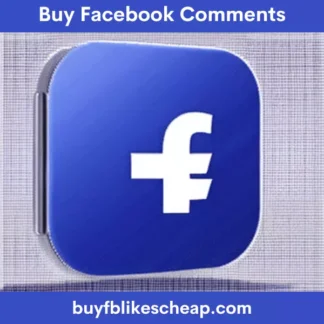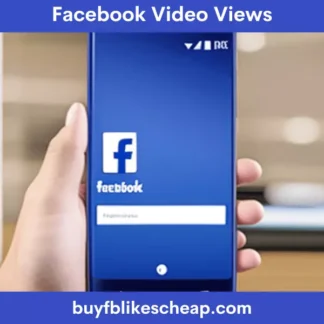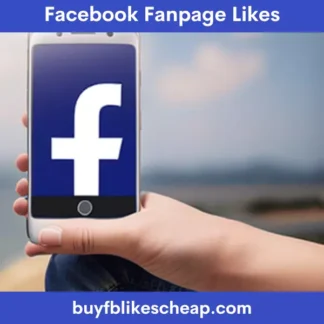If when starting the online presence of your brand you have considered creating a fan page to present your products or services and win more customers, you may have noticed that Facebook is a very powerful social network. However, due to algorithm changes, it is also very limited in its organic reach.
In early 2018, Facebook made a major change to its algorithm, which set off alarm bells for many advertisers. That time, the end of organic reach for fan pages was announced. From then on, Mark Zuckerberg proposed that most of the publications that appear in the user’s feed be from people with whom they have a greater connection and fan pages would not fit into that vision.
According to Zuckerberg, the main objective of the change was to move from publishing relevant content to more meaningful content, so that users are more eager to be on the social network on a daily basis. Advertising on Facebook is now becoming more important, and it has become one of the main ways to reach the target audience. In that sense, I will teach you step by step how to advertise on Facebook.
What is Facebook Ads?
It is a tool that allows you to create paid advertisements and offers several possibilities of formats and segments to promote a product or service through the social network. This powerful ad and campaign system encompasses several factors that help businesses meet specific marketing objectives and reach their target audience. Ads allow you to do a wide variety of actions, from increasing your audience to generating a registration base around one of your services.
Advantages of advertising
Other additional advantages of advertising on Facebook are:
- Its high levels of segmentation allow you to show your brand to people included in your target audience and maximize the chances of converting them into customers.
- Whatever you’re main objective, it is a tool that enhances the engagement of your brand.
- It allows you to measure the performance of your ads through detailed and easy-to-read reports.
- It is a marketing platform that will help you make new promotional opportunities for your product or service visible.
Before starting any action on the platform, we must create an account in the Facebook Business Manager. It is a tool that helps you manage all your digital assets from your fan page, advertising accounts, instagram accounts, pixels and other Facebook applications, efficiently and in one place. It is made for companies and marketing agencies that need to enable different permissions to many people.
The main goal of Facebook Business Manager is to gain more control of your digital assets on the network, to streamline your workflow and avoid switching from one account to another all the time. These are some of its advantages:
It allows you to manage access to your fan page, instagram accounts and advertising accounts.
Access to Facebook Audience Insights, a tool that provides information on two groups of people (people connected to your fan page and another group of people on Facebook), which allows knowing their demographic data (age and sex, levels of academic training, positions, sentimental situations and much more) and helps us to better understand our target audience and generate relevant content for our organic and advertising actions.
Six steps to advertising
1. Enter Facebook Ads. Enter your personal account and the one in which you have the administration of the fan page. In the right bar, there is the option “Create ad”. Click and an ad manager window will open.
2. Choose the objective of your campaign. You must be clear about what you want to achieve with your ads. The tool shows you 11 different targets. For example, you can choose between driving traffic to your website, gaining engagement on a specific post on your fan page, or getting users to download your company’s mobile app, among others.
3. Determine your campaign and ad budget. A section will be enabled from which you must enter the name of the campaign and determine the daily or monthly budget. This will depend solely on the money you allocate for your campaign. You can invest from S/10 daily for objectives such as interaction or web traffic.
4. Set your calendar and audience. After assigning the budget to invest, you will be able to choose if you want to start the campaign right now or if you prefer to choose a start and end date. Thus, you will also be able to estimate how much you spend if you designated a daily budget for the campaign.
In this section you can also configure who will see your ads. For this, it is important that you know your target audience and, if possible, that you have prepared a profile of your ideal client (buyer person) so that the segmentation values are very specific.
You can segment your audience based on basic data such as: age range, gender and location (country, city or districts). You can also do it from demographic data, interests and behavior that users indicate in their Facebook account. You can choose between data such as level of academic training, professional career, work sectors, job positions, etc.
Regarding the interests of your audience, you can choose between hobbies and activities, favorite drinks and foods, entertainment activities, type of business, industries that you follow, etc. You can also choose some behaviors such as digital activities (type of device, internet browser, operating systems, etc.), purchasing behavior, trips (people who returned from traveling, who travel every week, etc.), among others.
5. Create your ad. First you must choose the fan page of your company in the “Facebook page” section. If your brand has an Instagram account, you can also select it so that the ad is also shown on that network.
You then have two options: you can choose an existing post to boost or create an ad from scratch. In both cases, you must take into account the following Facebook requirements:
- The title of the ad must not exceed 25 characters.
- Make sure that the description is related to the objective of the ad and that it does not exceed 90 characters.
- The text of the image cannot exceed 20% of the total space of the image. To do this, you can use the text overlay tool.
- The image size should be 1600 x 628 px, based on Facebook’s recommendations.
Other tips:
- Make sure you use a clear and sales- oriented call to action (CTA).
- Check that your ad is displayed well on all devices.
6. Monitor your campaign. To know the performance of your campaign, it is important to do a daily monitoring and thus recognize if it is doing well or if you need to make any changes in the targeting, budget or message of the ad. Some of the metrics you should evaluate are cost per investment, reach, conversions or results, amount spent and relevance score (to know how relevant Facebook gives your ads).
Remember that while it is essential to create a strategy to have the clearest actions, in digital marketing it is all about trial and error. Therefore, I recommend you monitor your campaign and optimize it to achieve your goals. I hope this guide will help you create your ads on Facebook and reach more people. Let’s do it! Have you carried out any campaign through this social network? Tell us your experience.





